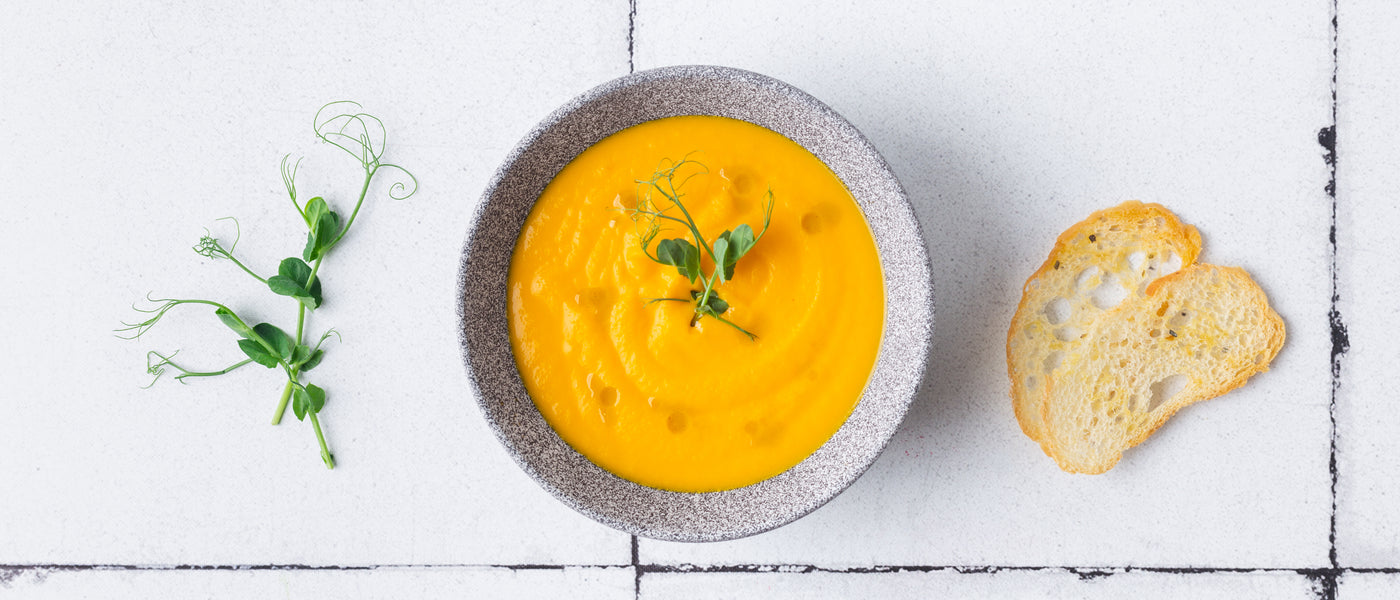
Squash and ProLon
'SQUASH: BENEFITS, HEALTHY RECIPES, AND THE PROLON DIET'
Squash is a worldwide known fruit, characterized by different nutrients and benefits, that can affect positively people’s general health conditions, and by its versatility, you can prepare a variety of healthy recipes.
Thanks to its distinctive properties, Squash represents one of the main ingredients of the ProLon diet.
The Origins of Squash
Squash is a flowering plant (family of Cucurbitaceae), cultivated as a vegetable, but botanically considered a fruit because it contains seeds.
WHAT’S THE ADVANTAGE? You can prepare both sweet and savoury plates with this ingredient!
The origins of squash reside in Mexico and Central America as fruits cultivated firstly by indigenous people and then discovered by the European settlers after 1492. The best-known American squash is the Hubbard Squash, renamed by Lady Elizabeth Hubbard who in the 19th century revealed to the local Magazine of Horticulture its good properties.
How many types of Squash are cultivated worldwide?
There are more than 30 types of squash, that vary in size, shape, colour, methods of cultivation and preparation!
Squash families can be divided into two: summer and winter. On the one hand, summer squashes are quick-growing plants that produce small fruits with diversified shapes of colour that go from yellow to green. Examples of the summer squash family are courgette/zucchini and yellow crooked squash.
On the other hand, winter squashes, of which the most known are pumpkin and butternut squash, are vine plants that produce large-shaping fruits, which can be stored for longer than summer squashes.
Pumpkin is for many cultures the symbol of Halloween. A rounded fruit with yellow-orange coloration, made of 90% of water. In fact, there are more than 45 types of pumpkin, cultivated in every continent except for Antarctica. Here are the 3 main health benefits of Pumpkin:
- Beta-carotene (that gives the orange colour to the fruit), may help protect against asthma age oxidative stress and age related diseases, such as heart disease
- Vitamin C and potassium both support heart health.
- Vitamin C, Vitamin E, and Beta-carotene sustain eye health and may help prevent degenerative damage in older adults
Curiosity! What was Pumpkin used for in the past? Pumpkin use has ancient origins. It is said that pumpkin seeds were consumed by the Aztecs as a very satiating snack, while the pulp was used by other indigenous populations as a medical mixture to alleviate burns.
What we have in common between history and present times is that as in the past, we have never stopped consuming or using every part of the pumpkin since everything from skin to pulp is edible.
Butternut Squash
Elongated-shaped fruit, that reminds of a bell, with cream-coloured skin and yellowish or orange pulp. What are the main health benefits of Butternut Squash?
- Vitamin A and Vitamin C represent the first important antioxidants that help protect cells from damage caused by unstable molecules, slow down the aging process, and support the growth of tissue like skin and hair. Lutein and Zeaxanthin, the other two antioxidants, support eye health;
- The high quantity of fibre present in the fruit may help prevent constipation;
- Potassium helps prevent higher blood pressure, and with Magnesium, Manganese, and Calcium, it plays a central role in improving bone mineral density.
How to store the Butternut Squash? Butternut squash should be stored in a cool, dry, and dark place and away from fruits that ripen quickly like apples as their release of ethylene gas can affect the butternut squash and cause a rapid rot process. Also, good air circulation should be a must, but no refrigeration!
Here is a recipe taken from The Longevity Diet book:
Pumpkin Soup with croutons
- Pumpkin or squash, peeled, seeded, and chopped (300 g)
- Olive oil (12 ml/1 tbsp)
- Chili flakes (optional)
- Parsley
- Salt and pepper to taste
- Croutons (40 g)
- Pumpkin seeds (9 g/1 tsp)
Boil the pumpkin or squash in salted water. When cooked, drain the water. Add the oil, chili flakes, onion, parsley, and salt and pepper to taste. Stir well. When soup reaches the desired consistency, puree it with a hand or stick blender. Serve in a bowl garnished with croutons and pumpkin seeds.
You can also try the tasty Butternut Squash soup from the ProLon Fasting Mimicking Diet kit.
Butternut Squash and the ProLon Fasting Mimicking Diet
Butternut Squash is one of the main ingredients of the second variety of the Fasting Mimicking Diet – ProLon® Europe kit. As the principal component of four soups of the kit, this fruit gives a light orange colour, a dense consistency like a pureed soup and a sweet and nutty flavour to the plate.
Although all the ProLon soups are dried, they preserve all the properties of their ingredients and combine the different nutrients so to allow your body to enter a fasting state and start the process of cellular regeneration and energy boost with 25% more hydration on your skin.
If you have never tried the ProLon© diet, discover how it is easy to enjoy all the benefits of its ingredients in just 5 days!

